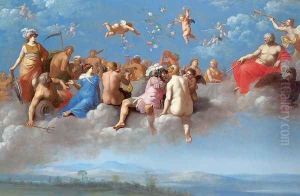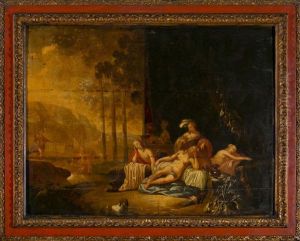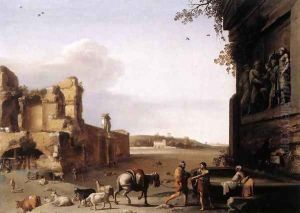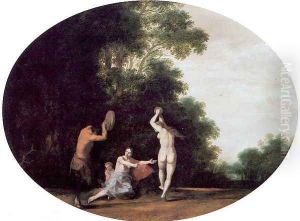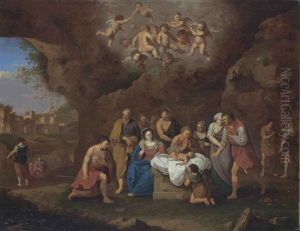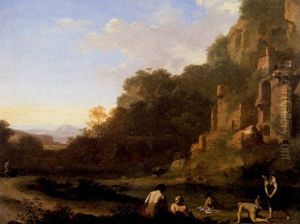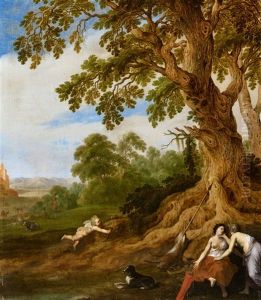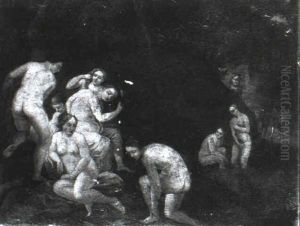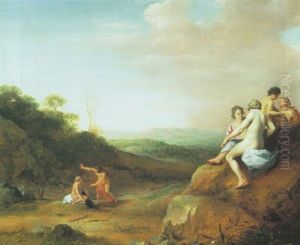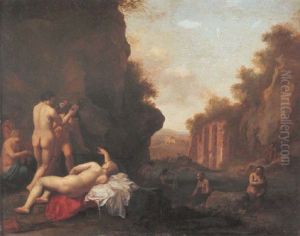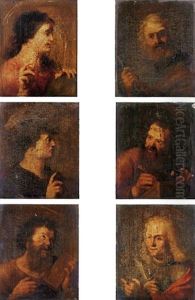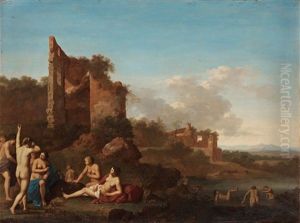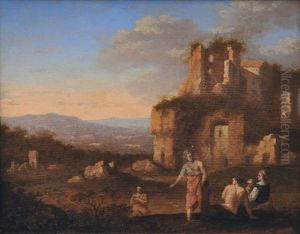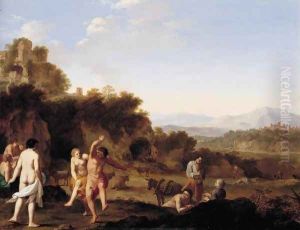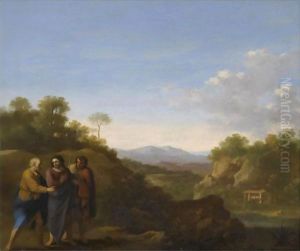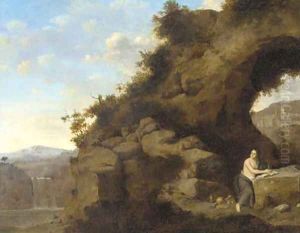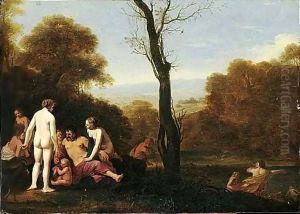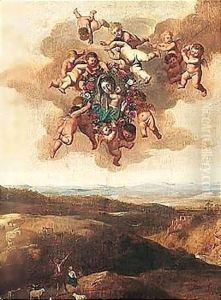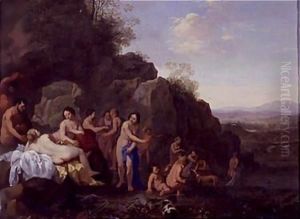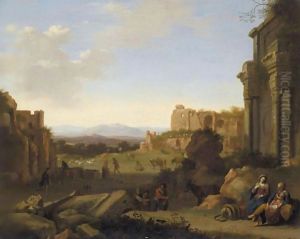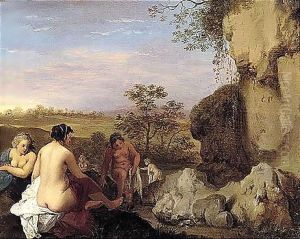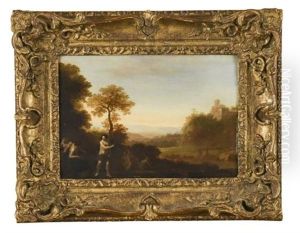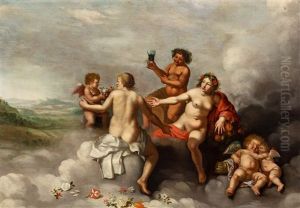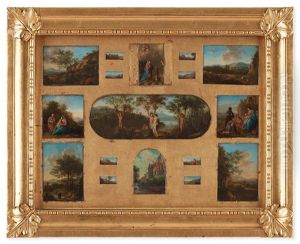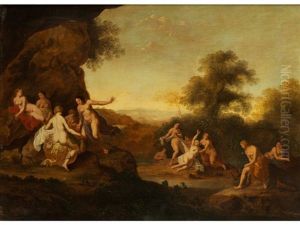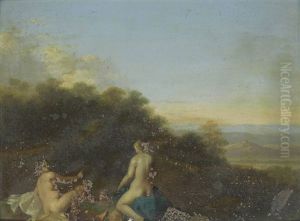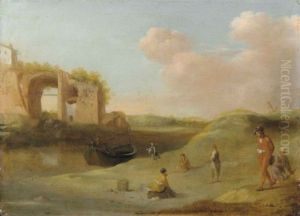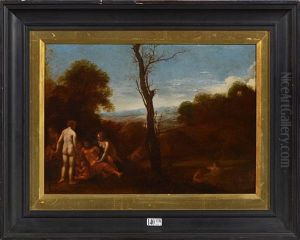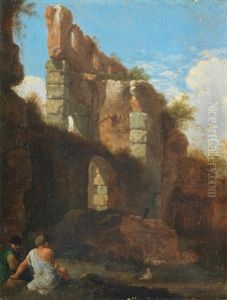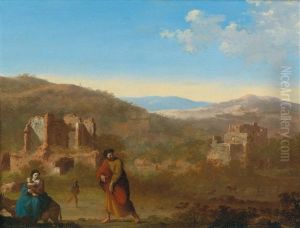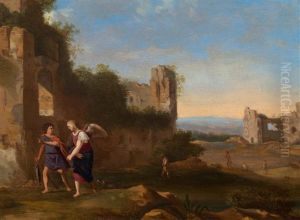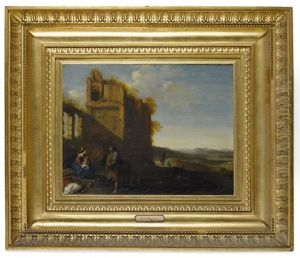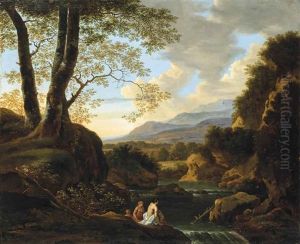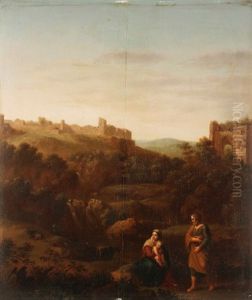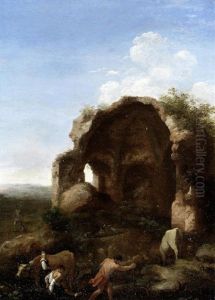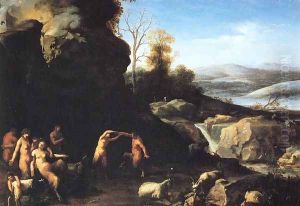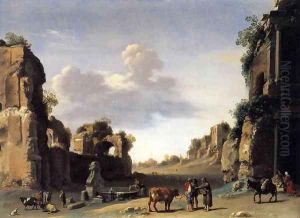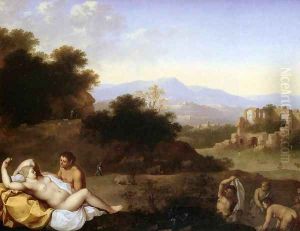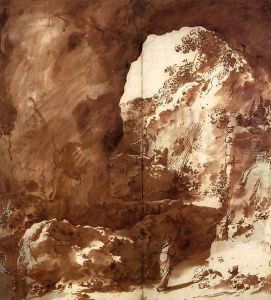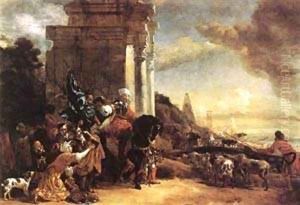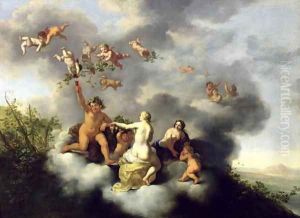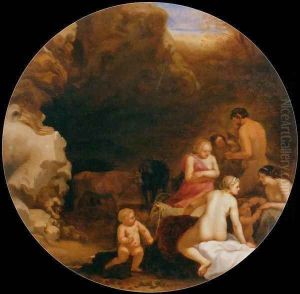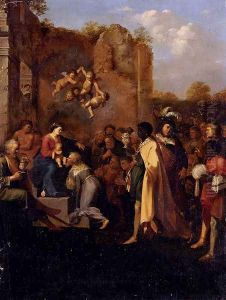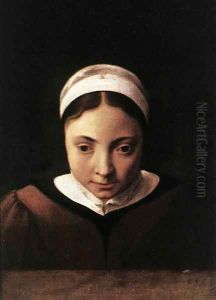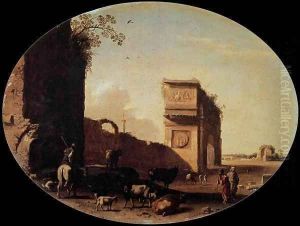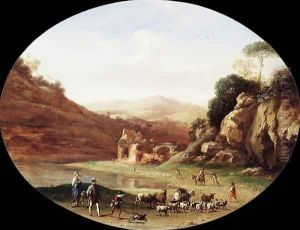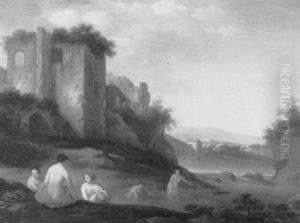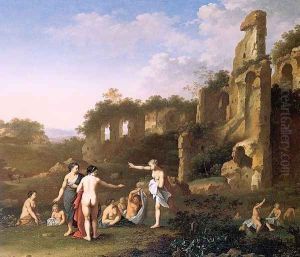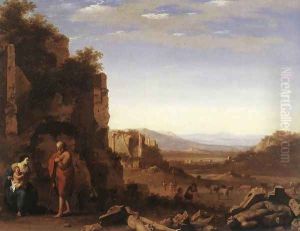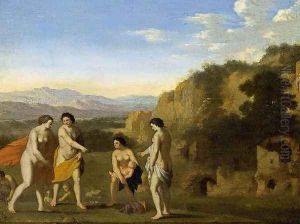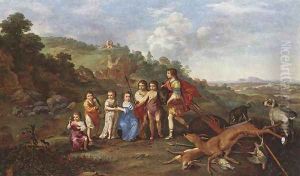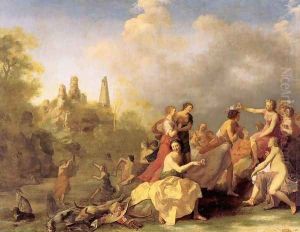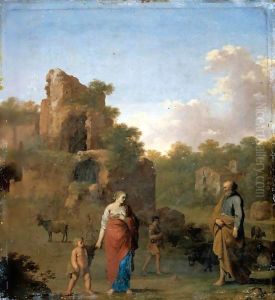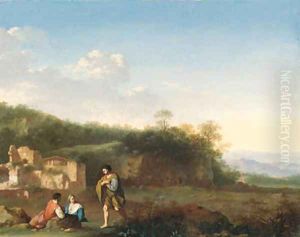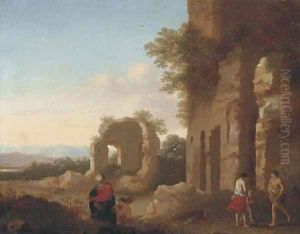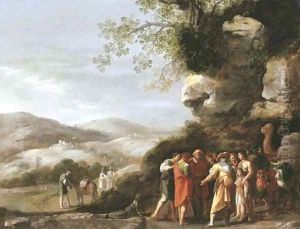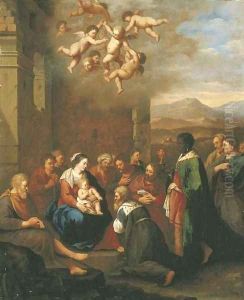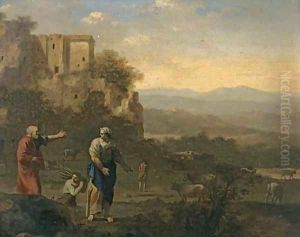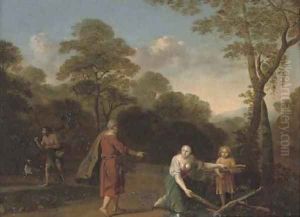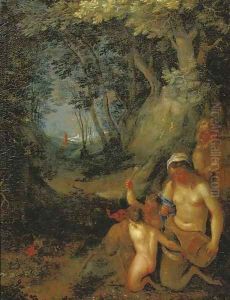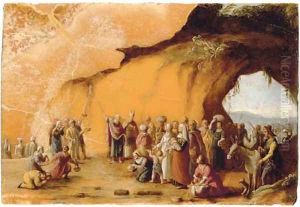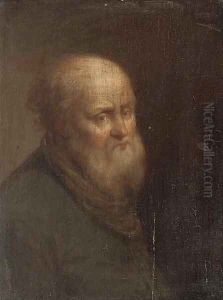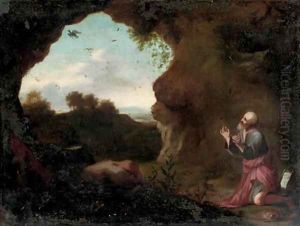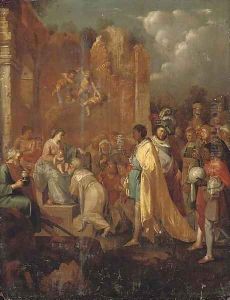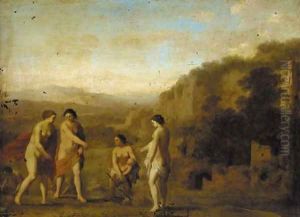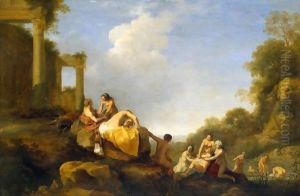Cornelis Van Poelenburgh Paintings
Cornelis van Poelenburgh was a Dutch Golden Age landscape painter born either in 1594 or 1595 in Utrecht, Netherlands. He was known for his small but highly polished landscape paintings, often imbued with a classical or Italianate sensibility, which was due to his extended time in Italy. As a young artist, he trained under the guidance of Abraham Bloemaert, who was a prominent history and landscape painter of the time.
Poelenburgh's talent and ambition led him to travel to Rome around 1617, where he became a founding member of the group of Dutch and Flemish artists known as the Bentvueghels ('Birds of a Feather'), an informal group who took on bird-related nicknames. He was given the nickname 'Satyr'. During his time in Rome, he was influenced by the work of Adam Elsheimer and the classical landscapes of artists such as Claude Lorrain. He developed a style characterized by clear, calm scenes that often included small figures from mythology or the Bible, which were set in Italianate landscapes.
His work found favor with influential patrons, including cardinals and popes, as well as with Grand Duke Cosimo II de' Medici in Florence. After his Italian sojourn, Poelenburgh returned to Utrecht in 1626, where he became a leading figure in the Utrecht school of painting. He continued to paint in a style that reflected his Italian experiences, which was becoming increasingly popular among Dutch art collectors and enthusiasts of the time. Cornelis van Poelenburgh's works were particularly prized for their delicate handling of light and detail and the sense of harmony they conveyed.
Poelenburgh's success also led to a demand for his works from the English court, and in 1637 he visited England where he was employed by Charles I. His English period was brief but it contributed to the spread of the Italianate landscape style in England.
Throughout his career, he also influenced a number of younger artists, including Jan Both, who was another Utrecht painter famous for his Italianate landscapes. Poelenburgh died in Utrecht in 1667, leaving behind a legacy as one of the key figures in the development of Dutch landscape painting, merging northern European elements with the classical landscapes of Italy. His paintings still feature in major museum collections around the world.
